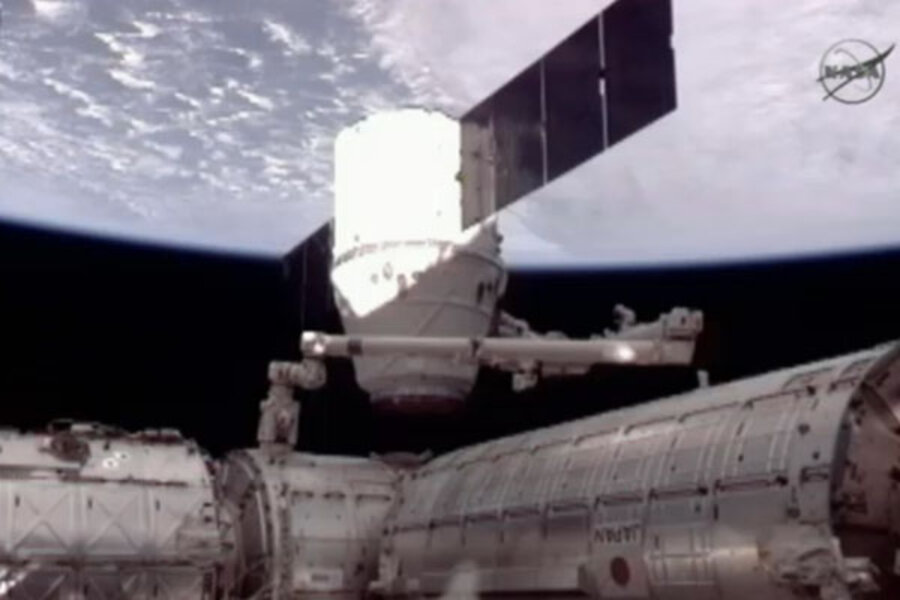Next stop for SpaceX's Dragon cargo ship: the Pacific Ocean
Loading...
After a historic launch and five days docked to the International Space Station, SpaceX's Dragon cargo ship is on its way home.
The first commercially owned and operated cargo craft to reach the station pulled away under its own power shortly before 6 a.m. Eastern Daylight Time after station flight engineers Joe Acaba and Don Petitt used the space station's robotic arm to detatch Dragon and gingerly position it about 30 feet below the orbiting outpost.
From there, the craft's thrusters put additional distance between the two vehicles, sending it beyond the zone where NASA's mission control at the Johnson Space Center in Houston had joint control over the craft.
At 10:51 a.m. EDT, Dragon is scheduled to uses its thrusters for nearly 10 minutes to begin its descent into the atmosphere. On its way down, it will jettison the cylindrical cargo “trunk” it carried up, leaving the conical capsule free to splash down in the Pacific Ocean. Controllers are aiming for a spot some 490 nautical miles southwest of Los Angeles.
A small fleet of recovery vessels will be on hand to retrieve the capsule, which is returning some 1,400 pounds of cargo from the space station.
This is not the first time SpaceX has attempted to return and recover an orbiting capsule. In December 2010, during its first demonstration flight as part of a $1.6-billion, 12-mission station-resupply contract with NASA, SpaceX successfully orbited and recovered a Dragon capsule.
Still, “we're not taking this lightly,” said SpaceX mission director John Couluris during a prereturn briefing on Wednesday. Yet even if something goes wrong on the return, the SpaceX team will have considered the mission a success – demonstrating that its craft was up to the task of rendezvousing, docking, and delivering the goods to the International Space Station.
Dragon's ability to bring cargo back, as well as deliver it, makes it unique among the three other cargo craft that international partners provide to regularly resupply the station. If a malfunction prevents Dragon from spashdown and recovery, it will still have matched the other cargo carriers' capabilities.
From NASA's perspective, all of the demonstration objectives it set for SpaceX – tied to safe operation in the space station's vicinity – have been met, said Holly Riding, NASA's lead space-station flight director for the mission.
During Dragon's stay on orbit, station crew members unpacked about 1,000 pounds of cargo the craft brought. In addition, flight engineers used cameras on the station's robotic arm to inspect the capsule for damage (they found none) and to give the crew some experience operating the arm around the craft's unpressurized trunk. On later flights, the trunk will be loaded with cargo. Dragon docks with the station nose-first, so the crew has no direct view of the rear of the trunk, where loading and unloading would take place.
Although the capsules are designed for reuse, NASA has ordered up a fresh capsule for each of the 12 missions SpaceX will perform for the agency.
The first resupply flight under NASA's contract with SpaceX is scheduled for the third quarter of this year.






